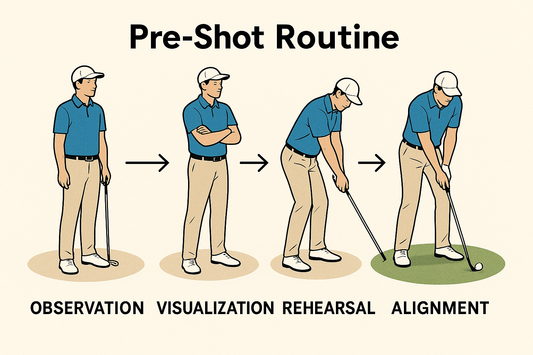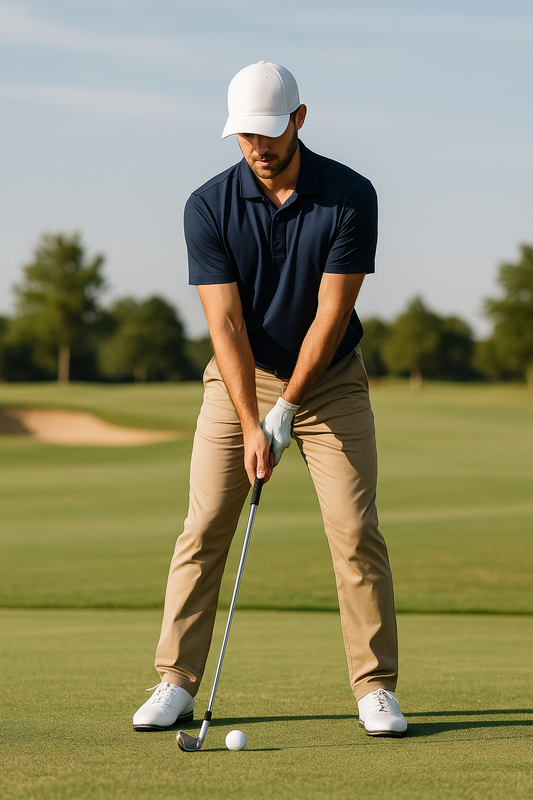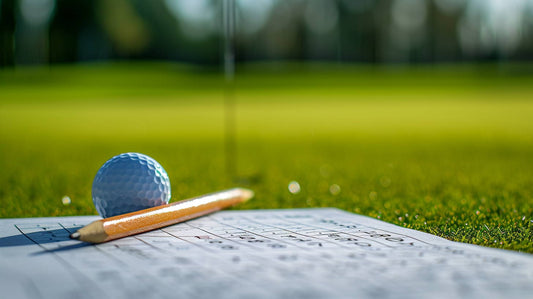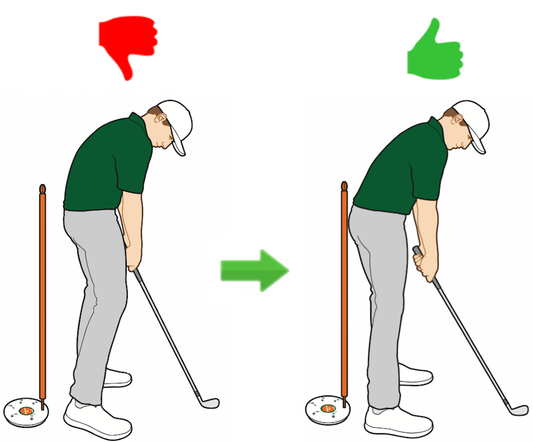Author: WhyGolf WhysGuy
We want to preface this guide with the acknowledgment that neither WhysGuy nor anyone from the WhyGolf team claims to know everything about the golf swing. We don’t want anyone to treat what we say here as gospel. While much of what we’ll say is a reflection of decades of dialogue with PGA instructors and players, we’re always learning and we understand that knowledge about the sport of golf will continue to evolve over time.
In this post, WhysGuy will discuss:
- What a flying right elbow is in the golf swing and the potential consequences of a flying right elbow.
- How the WhyGolf ArmAlarm is designed to help golfers fix the flying right elbow.
1. What is a Flying Right Elbow in the Golf Swing?
A flying right elbow in the golf swing happens when a golfer's trail elbow moves across and behind their body in the backswing. Though many great golfers throughout history have played from this position, a flying elbow can add unnecessary movement to the swing and ultimately make it difficult to hit the ball consistently. We're not here to tell you that you need to fix your flying right elbow in your golf swing. Rather, we're here to provide some guidance for those who want to keep their arm structure consistent and more in sync with their upper body.
One of the reasons a flying elbow can complicate the golf swing is that it can often result in an across the line position at the top of a golfer's backswing. This "across-the-line" move can often lead to a severe in-to-out swing path through the ball. To avoid the crazy hook, a golfer may overcompensate and come over the top to square their swing path. In either scenario, one can often see improved consistency if they consider keeping their arms more connected and in sync with their body.
WhyGolf has the perfect tool for you to fix your flying elbow. The ArmAlarm gives real-time auditory feedback when your arms separate, allowing you to identify and correct the point in your golf swing at which your arms separate. When you set up the ArmAlarm on your forearms and let your trail elbow fly in your backswing, the tether will disconnect and beep. Check out how it works below.
2. Place the WhyGolf ArmAlarm On Your Forearms
Place ArmAlarm on your forearms, splitting the middle between your wrists and elbows. Loosen the tether so as to ensure you have a fair amount of slack as shown in the adjacent picture. Attach the magnets together. If you disconnect the magnets, you will hear an alarm.
As you take the club into your backswing, ensure that the tether does not separate from the magnet case. If it feels like there's not enough slack for you to work with, consider rotating the knob on the tether case counterclockwise to add length to the tether. Click hear to learn more about setting up the ArmAlarm.
3. Hit Balls With ArmAlarm Until You Fix Your Flying Right Elbow
Work on keeping your right elbow close to your body with ArmAlarm. Be sure to hit balls with it! We often see players who struggle with a flying elbow have a much harder time keeping their elbow from flying when hitting a golf ball. Thus, we stress that you hit golf balls with ArmAlarm until your flying elbow is under control.
We view the ArmAlarm as a major step-up relative to other devices used to foster connection in the golf swing. A primary reason why we believe this is because a golfer's feeling does not change whether or not they are hitting golf balls with ArmAlarm.
When working with ArmAlarm, a golfer has to accomplish the correct movement on his or her accord, as opposed to being guided or forced into a certain position (most golf training aids force you into a certain position). Since a player has to do all the work with ArmAlarm, he or she will be much better-equipped to move correctly when time comes to hit a golf ball without the training aid.
Flying Right Elbow in Golf Swing - Key Takeaways
- A flying right elbow in the golf swing, thought not necessarily a swing flaw, can impair a golfer's ball-striking consistency.
- The WhyGolf ArmAlarm, among many things, can help a golfer fix their flying right elbow.
Ready to fix your flying elbow? Purchase your ArmAlarm here.
What is a flying right elbow?
A flying right elbow in golf happens when a golfer's trail elbow moves away from the body during the backswing. Instead of maintaining connection to the body, the right elbow lifts and moves outward, resulting in a "flying" motion.
How do i fix a flying right elbow?
A flying right elbow can be fixed in multiple ways, however the simplest way to fix a flying right elbow is to practice with ArmAlarm. It will give you real-time feedback when your arms separate in your golf swing, allowing you to quickly identify and monitor problems relating to your arm structure throughout your golf swing.
Why is a flying right elbow bad?
A flying right elbow in the golf swing can lead to loss of control of the clubface and swing path through impact.
How do i know if i have a flying right elbow?
There's no objectivity here. Most would agree that a flying elbow is in fact "flying" when a golfer's trail forearm is parallel with the ground.
What benefits will I enjoy if I fix my flying right elbow?
Fixing a flying right elbow can result in many benefits for a golfer. It can lead to increased consistency with improved contact, increased power, and better control with the clubface.
Any other tips on how to fix a flying elbow?
Often times when the right elbow is "flying", the arms tend to get stuck and behind the body in the downswing. A good visual is to feel like you are holding a plate at the top of the backswing with your right hand. Similar to a waiter or waitress, this allows the right elbow to point downwards rather than horizontally. When holding a plate, the right wrist will sit in a position that sets the right arm in a more efficient move to descend into the downswing.
Check Out Our YouTube Channel For Drills and Tips









